Lesson 1: Primary Sources Defined with Examples
Photograph of Senator Jacob K. Javits at the "March on Washington," August 28, 1963.
Senator Jacob K. Javits Collection, Special Collections, SBU Libraries. Photograph
credit: Bruce Jay Colan.
LESSON 1: PRIMARY SOURCES DEFINED WITH EXAMPLES
1.1 What are Primary Sources?
1.2 What are Secondary and Tertiary Sources?
1.3 Genres, Types, and Formats of Primary Sources
1.4 Nature of Primary Sources
1.1 What are Primary Sources?
A primary source, according to the Society of American Archivists, is “material that contains firsthand accounts of events and that was created contemporaneous to those events or later recalled by an eyewitness.” For inclusivity, and to account for Indigenous and other cultural ways of knowing, it is important to think beyond materiality and recognize intangible and ephemeral modes of information transfer. A primary source therefore communicates an accounting of history conveyed by a witness or through multi-generational transmission.
Diversity of Primary Sources
There is a diverse range of genres, content, and formats in which primary sources
are represented.
For example, an 18th century memoir in original book format and an Instagram post uploaded a minute ago in digital format are both primary sources.
Artifacts and specimens, or items found near primary sources such as tools, specimens and plant-based materials also fall within the scope of primary source evidence.
More examples: textual or written works such as letters and manuscripts; books written at the time under study; interviews and concert performances; digital satellite maps; nontextual works (paintings, photographs); fossils; jewelry; and social media communications.
Example 1: Below is a section of a map hand-drawn by Stony Brook graduate Larry Auerbach in 1978. The entire map of the SBU campus is available to consult in Special Collections and University Archives at SBU. Some questions to consider when examining and researching this primary source might include:
- Why might have this map been drawn?
- What does it depict?
- How was it made?
- Who was the intended audience?
- What was the artist's point of view and tone?
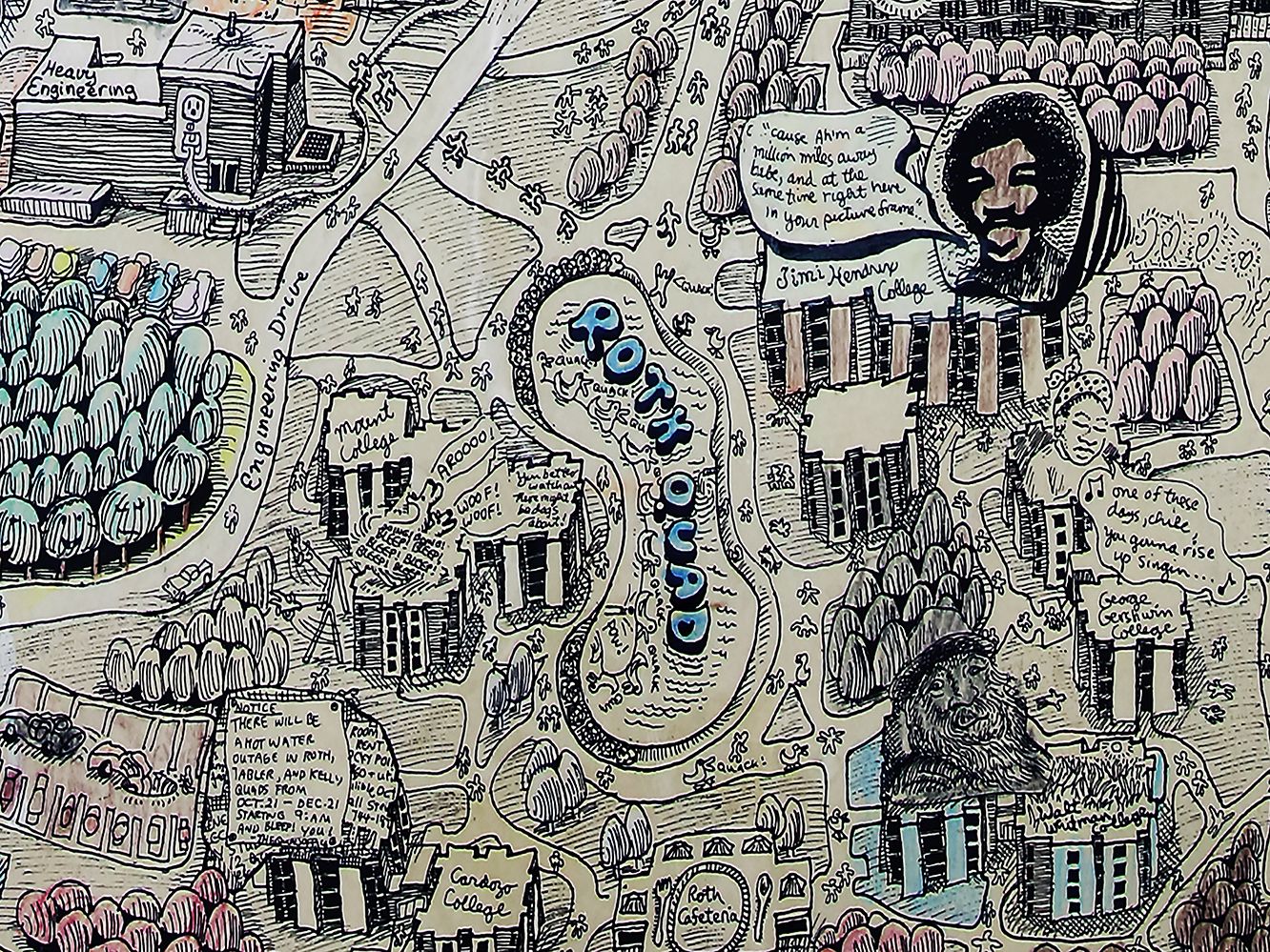
Auerbach, Larry. Section from The State University of New York at Stony Brook…: A Vision from the Clouds, 1978.
University Archives, SBU Libraries.
Example 2: Below is the cover of The Red Cross Cookery Book. It is thought to be published in Hong Kong and was printed by South China Morning Post in 1919. The book is available to consult in Special Collections and University Archives at SBU. Questions to consider when examining and researching this primary sources could include:
- Why was it made?
- What world and socio-economic events influenced its production?
- Who was the intended audience?
- What does the illustration depict and convey?
- What type of information does it contain?
- How many copies exist in libraries? What factors might account for this number?
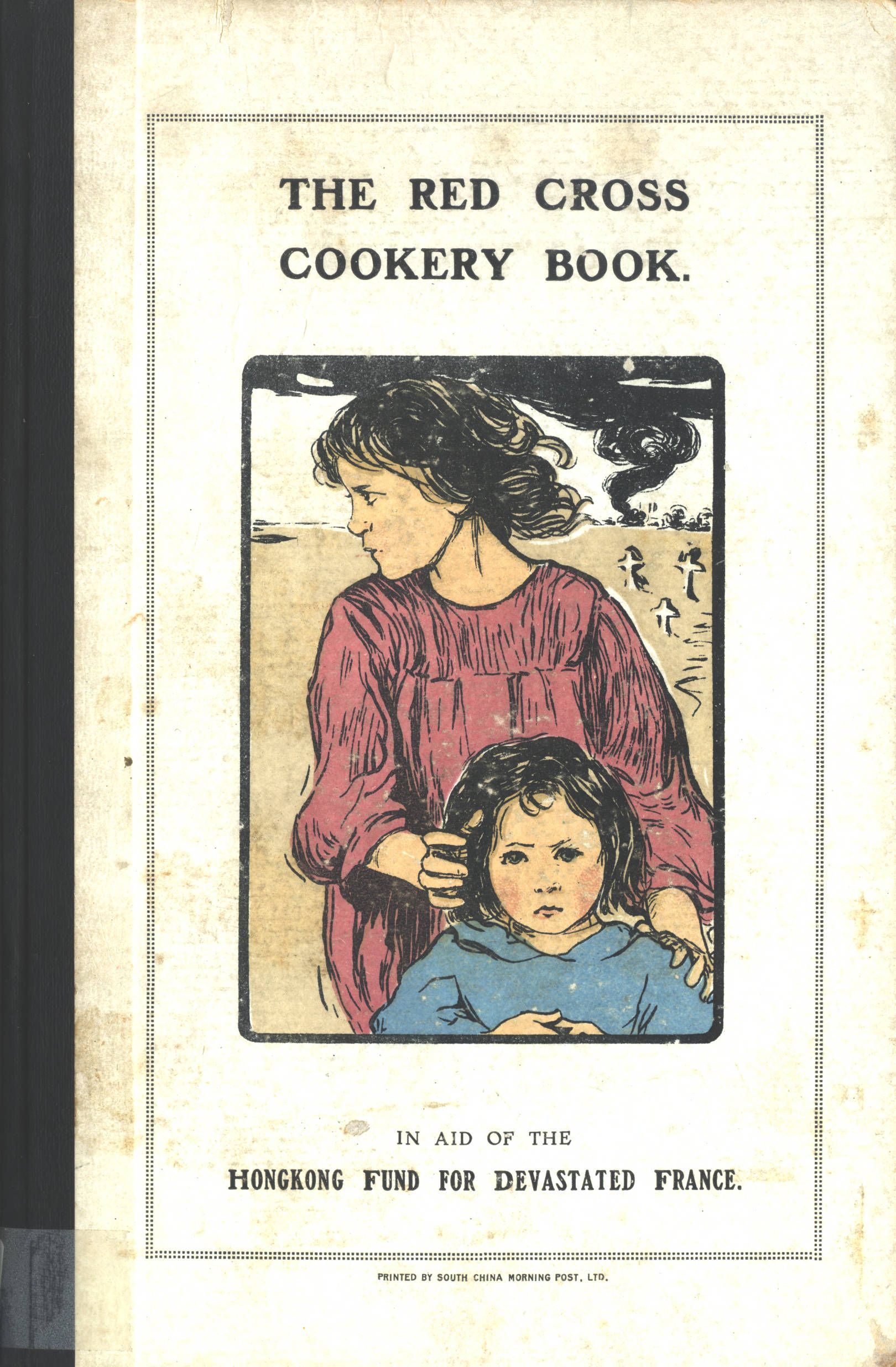
League of Red Cross Societies. The Red Cross Cookery Book. [Hong Kong]: Printed by South China Morning Post, 1919.
Jacqueline M. Newman Chinese Cookbook Collections, Special Collections, SBU Libraries.
Considerations for Assessing Primary Sources
The process of evaluating primary sources is multi-dimensional. It includes assessing
physical characteristics (materiality), considering the creator's intent, determining
the intended audience, and factoring in potential biases.
It is also important to evaluate the "provenance" of primary sources. Provenance is a term frequently used in historical research and in archival repositories to refer to the origin or source of something. Custodial history and transmission of information can provide insights into the perspective of the creator and the circumstances under which a source may have been created.
1.2 What are Secondary and Tertiary Sources?
Secondary and tertiary sources can support your arguments, findings, and points of view about primary sources.
Secondary sources are interpretative works or analyses produced through researching, consulting, and
studying primary sources.
Examples include works written from a historical perspective later in time such as
reviews, textbooks, biographies, and indexes.
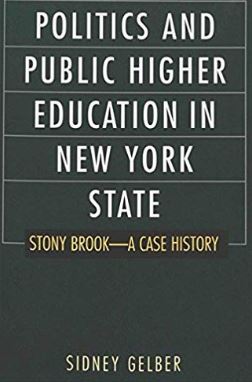


Left to right:
1) Gelber, Sidney. Politics and Public Higher Education in New York State: Stony Brook-a Case History. New York, NY: Peter Lang, 2001.
2) Shorter, Edward, and Max Fink. The Madness of Fear: A History of Catatonia. New York: Oxford University Press, 2018.
3) Teplitsky, Joshua. Prince of the Press: How One Collector Built History's Most Enduring and Remarkable
Jewish Library. New Haven, CT: Yale University Press, 2019.
Tertiary sources are summaries of topics and subjects compiled from a variety of primary and secondary
sources.
Examples include Wikipedia and encyclopedia entries, timelines, chronologies, bibliographies,
directories, and handbooks.

Section of the Wikipedia entry for Stony Brook University. Retrieved August 17, 2019.
1.3 Genres, Types, and Formats of Primary Sources
Primary sources are diverse and exist in nearly all formats. They are found in many genres (e.g., fiction, interview), mediums (physical representation; how they are made) and formats (how they are accessible).
Preservation of Primary Sources
Over time, the condition of primary sources can become compromised due to age, environmental
conditions, and technological obsolescence. For example, books can become brittle and dry, while equipment and formats used for
sound recordings may eventually become out-of-date and unsustainable.
To preserve sources, they may be migrated to newer formats which can increase access and reduce handling of the original materials.
Each example below is a primary source; the only difference is the way you access them.
Example 1: an autobiography in hardcopy book format (analog: print or paper) and the digital version of the exact same work in e-book format (digital: pdf).
Example 2: a vinyl album (analog) of a live Beatles' performance and the digital file of the same performance downloaded from iTunes.
Conservation or restoration processes can improve the physical condition of archival materials and books, and consequently extend longevity and improve access, as with papers from the Eversley Childs Collection (below).
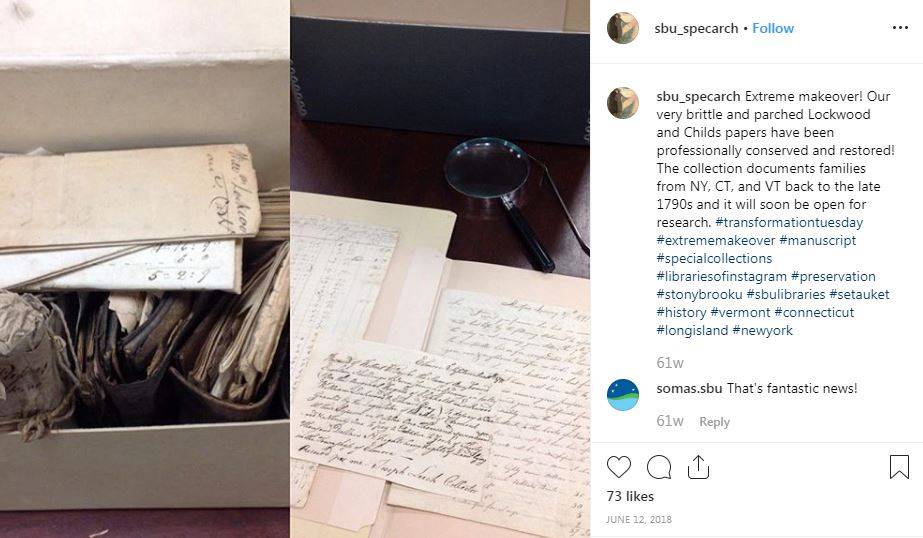
Instagram post by Special Collections, SBU Libraries' announcing conservation of brittle
papers from the Eversley Childs Collection. June 12, 2018.
EXAMPLES OF FORMS AND TYPES OF PRIMARY SOURCES
To illustrate the diversity of primary sources, review the list below.
Archives: this word has multiple meanings; it can refer to a physical place or virtual space
where archival materials are maintained and stored, or a collection of materials produced
by a person or organization.
Examples of archival collections include:
- Film archive of programs recorded at the Poetry Center at SBU in the 1960s and 1970s
- Papers of Environmental Defense Fund, the organization whose efforts in 1967 led to the nationwide ban on DDT and the birth of modern environmental law
Artifacts, Objects, and Biofacts: tangible items of cultural or historical significance and interest.
Examples include tools, vases, and jewelry. Biofacts are natural organic materials
such as bones, charcoal, and plant materials.
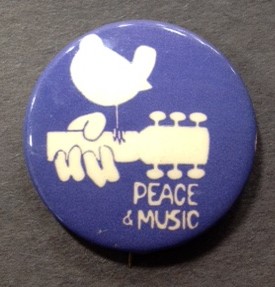
Pinback button from the Woodstock music festival held August 15-18, 1969.
Dove and guitar illustration with the phrase "Peace & Music." Part of the Nettie Feinberg
Collection.
- Skeleton of the 70 million year old dinosaur Majungasaurus crenatissimus from Madagascar, discovered by SBU paleontologists (a replica nicknamed "Stony Bones" on exhibit in the Administration Building)
Artworks: visually express ideas, feelings, and sentiments, and can document events in the form of photographs, drawings, paintings, and sculptures. Examples:
- Photographs of SBU displayed along the second floor mezzanine in the Melville Library
- Installation of the September 11 Memorial Arch situated between the Humanities and Psychology Buildings
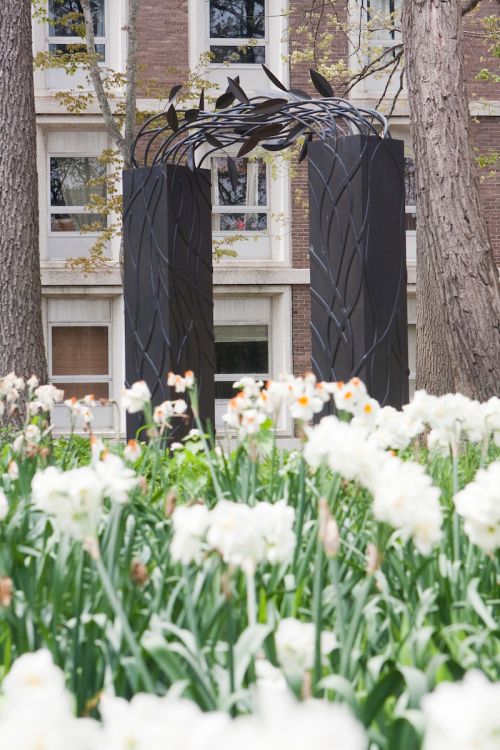
September 11 Memorial Arch donated by the Stony Brook Alumni Association.
Designed by designer-illustrator Milton Glaser in collaboration with fabricator Nicholas
Fasciano.
Twelve-feet high and eight feet wide, it is constructed of brass and engraved with
the names of the
21 SBU graduates lost on that day.
Books: published works written during the time period of the content under study or described such as memoirs, autobiographies, and works published at the time of the event. Eyewitness testimonies can also be published in book format. Example:
- Cyclists' Paradise: A Guide for Cyclists with an Accurate Map Showing the Roads and Cycle Paths of Long Island: with Notes, Suggestions, Runs, Hotels and Time Tables Sufficient to Enable Any One to "Lay Out a Trip" Intelligently. Long Island City, NY: Issued by the Long Island Railroad Co, 1899.
Beginning in the mid-19th century, the Long Island Rail Road produced countless numbers of travel and guidebooks touting Long Island as both an ideal resort destination and as a place to permanently reside. This map is part of an 18 page booklet that outlined a variety of routes for bicyclists to navigate the island. The roads in red were categorized as good, fair, and poor, however the small scale of the map and the blurred printing may have impacted bicyclists' attempts to "lay out a trip intelligently," as the title suggests. This book has been digitized by SBU Libraries and can viewed here.

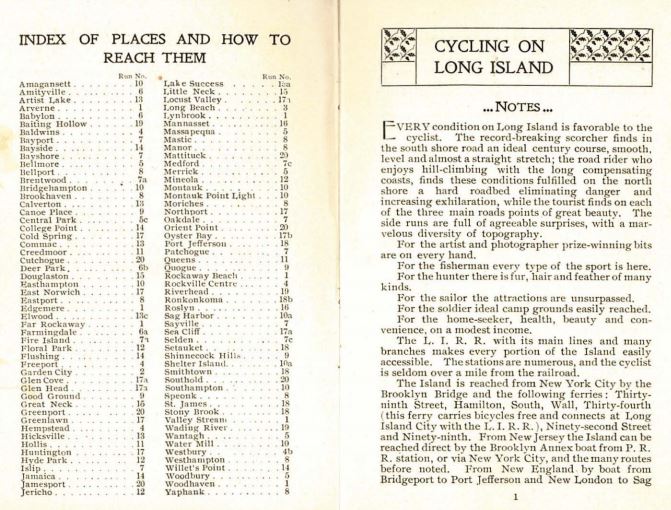

Correspondence: communication exchanges through letter writing in any medium from paper to e-mail to tweets. Example:
- Communications handwritten on postcards found within the Long Island Postcard Collection
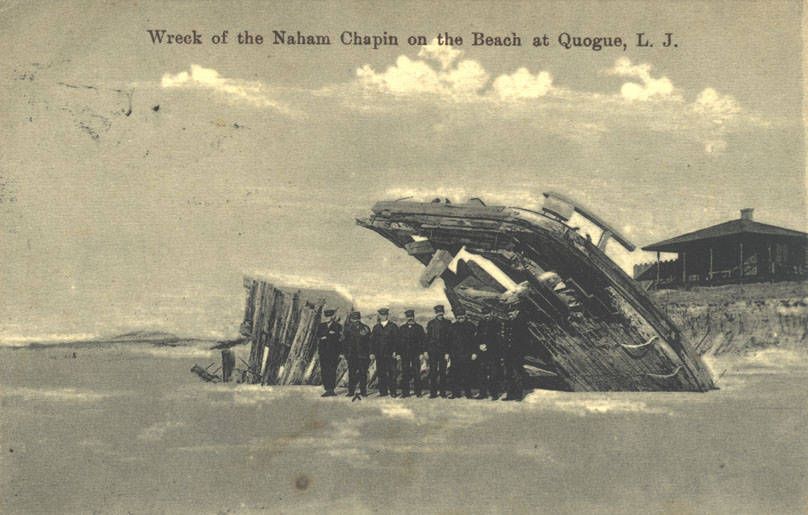
"Wreck of the Naham [sic] Chapin on the beach at Quogue, L.J. [sic]." 1910. Long Island
Postcard Collection,
Special Collections, SBU Libraries. Note the spelling of the three masted schooner is spelled incorrectly (Nahum),
as is the abbreviation for Long Island (it should be L.I.).
Data: data sets; observations made during the conduct of experiments. Examples:
- Naturalist's Robert Cushman Murphy's field notes made during oceanic cruises in the 1930s
- Dr. Max Fink's handwritten notes and papers on psychiatric studies and experiments
Dissertations: a document often in the form of a research paper or analysis completed in fulfillment of an academic degree. Example:
Ephemera: an item produced to communicate information and expected to have only short-term or temporary usefulness. Example:
- Concert poster announcing the artists and musicians performing at the 2019 Brookfest
at Stony Brook University

Government Publications: Laws, acts, hearings, and census data fall within this category. Example:
Manuscripts: a handwritten work; an unpublished work or a book, or document created using any means.
Maps: graphical, visual works that show features of Earth including landscapes, topography, and geography at a specific time and from a point of view. Example:
- Burr, David. H. Map of Suffolk County from An Atlas of the State of New York: Containing a Map of the Documents Deposited in the Public Offices of the State and other Original and Authentic Information under the Superintendence and Direction of Simeon de Witt, Surveyor General, Pursuant to an Act of the Legislature; and also the Physical Geography of the State and of the Several Counties and Statistical Tables of the Same. New York: D. H. Burr, 1829. (Pictured: Town of Brookhaven, New York section)
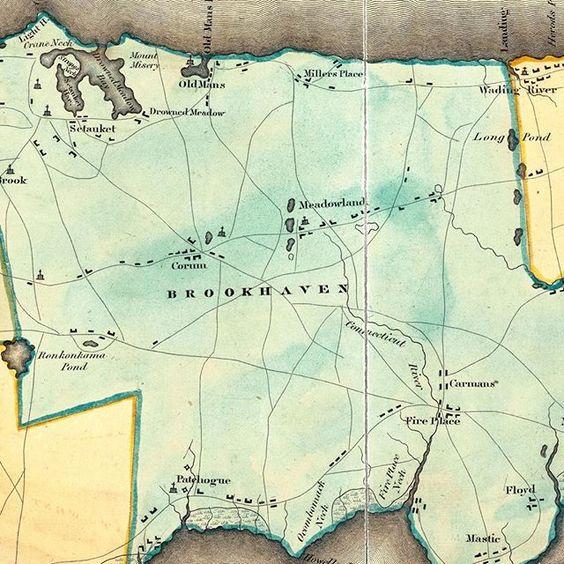
Oral and Video Histories: interviews, discussions, and conversations recorded or documented to glean insights
to a person's perspective and history.
Patents: a license or government entity designating right or title for a set period, especially the sole right to exclude others from making, using, or selling an invention. Example:
- A sampling of patents filed by the State University of New York
Performances and recounting: dancing, singing, and storytelling
Recordings: Audio and video recordings of sights and sounds at the moment of capture. Speeches, performances, and lectures could fall within this category. Example:
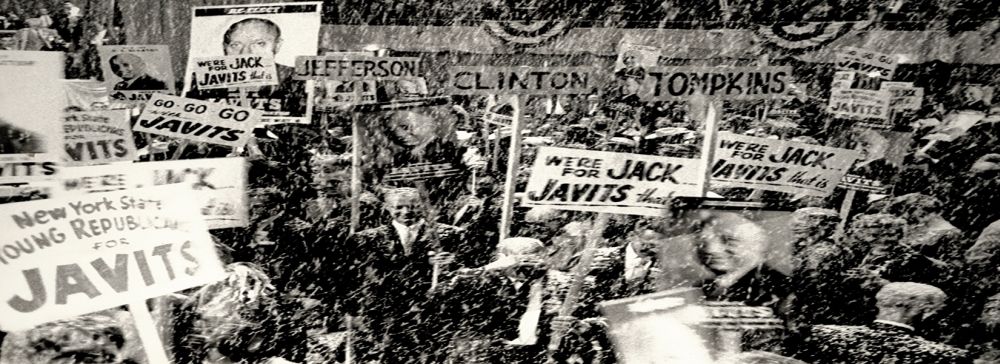
Senator Jacob K. Javits campaign, 1962. Photograph from the Senator Jacob K. Javits
Collection. Special Collections, SBU Libraries.
Serials: a work such as a newspaper or magazine that is published and issued at an established
frequency, e.g., bi-weekly, monthly, annually. Example:

First issue of The Stony Brook Press, Vol. 1 No. 1, October 25, 1975. University Archives, SBU Libraries.
Social Media: websites and applications that support networking and communicating timely information including blogs, vlogs, tweets, and posts to Facebook and Instagram. Example:

Visual Materials: broadly encompass a wide range of forms including films, photographs, artworks, and artifacts. Examples:
- Interview conducted in April 2019 with SBU Alumni and Founders of the Roth Pond Regatta (30th anniversary)
- Photograph of the 1969 SBU Baseball Team
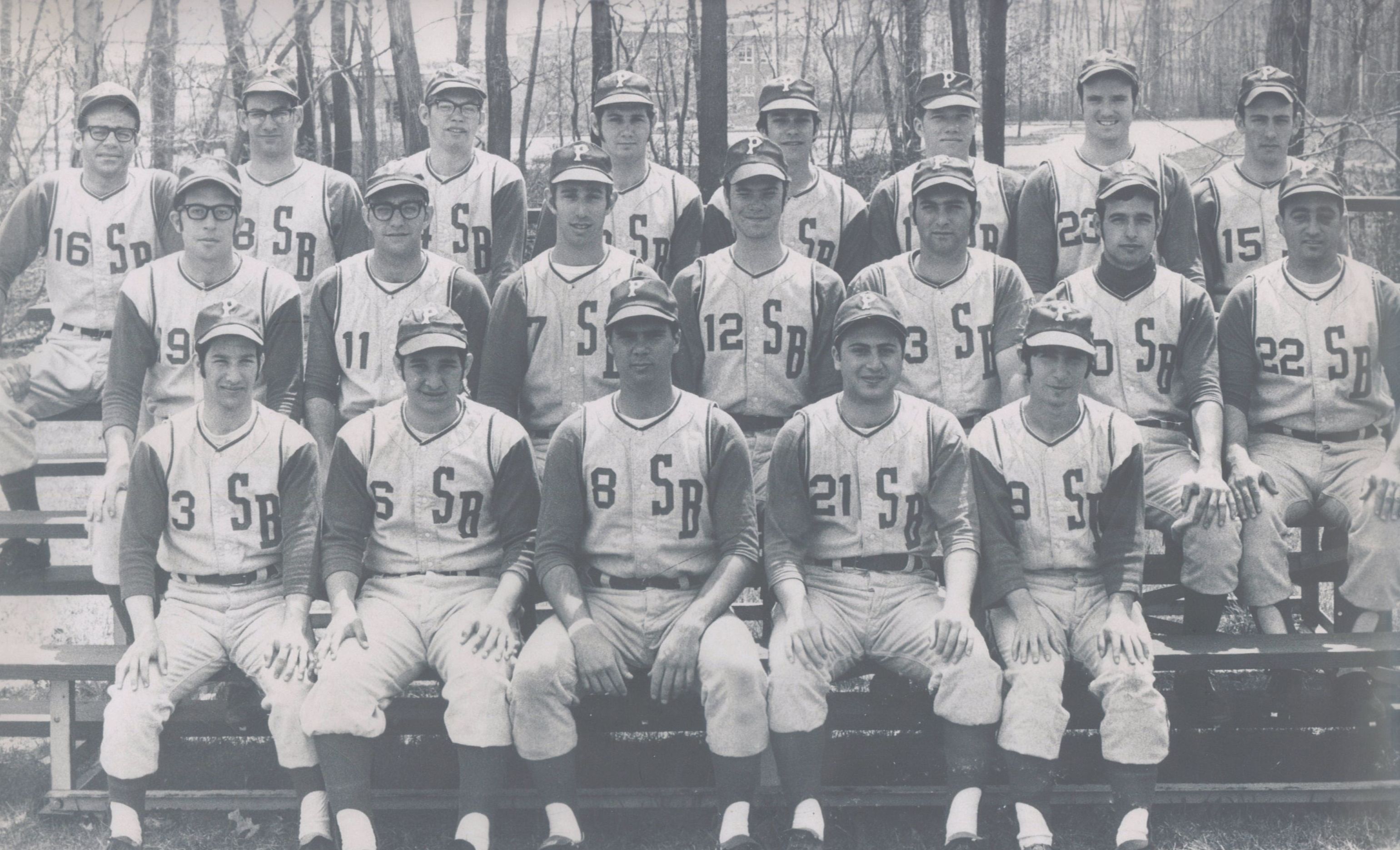
Photograph of the 1969 SBU Baseball Team. University Archives, Photograph Collection,
SBU Libraries.
1.4 Nature of Primary Sources
Later in this tutorial, you will encounter guided questions to help you evaluate primary sources. To introduce you to the investigative process, here is a short list of questions to consider as you progress in your research.
- Who is the author or creator?
- What biases or assumptions may have influenced the author or creator?
- Who was the intended audience?
- Did the source have influence on the audience?
- Has the source been edited or translated? Was the meaning altered?
TO COMPLETE LESSON 1:
1. Click here to access the QUIZ for Lesson 1 - it will open in a new window.
2. Answer all of the questions and submit your responses.
3. Return to this page and click below on "Next: Continue to Lesson 2."
